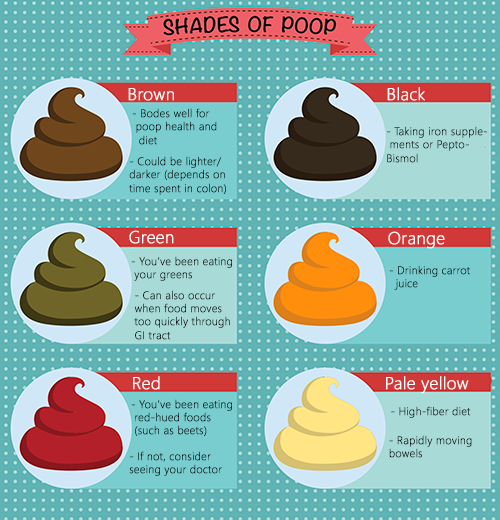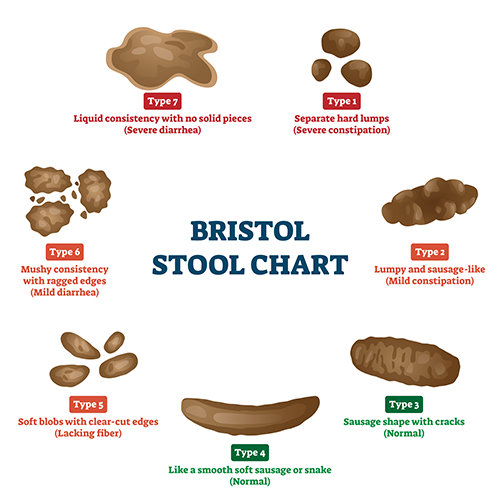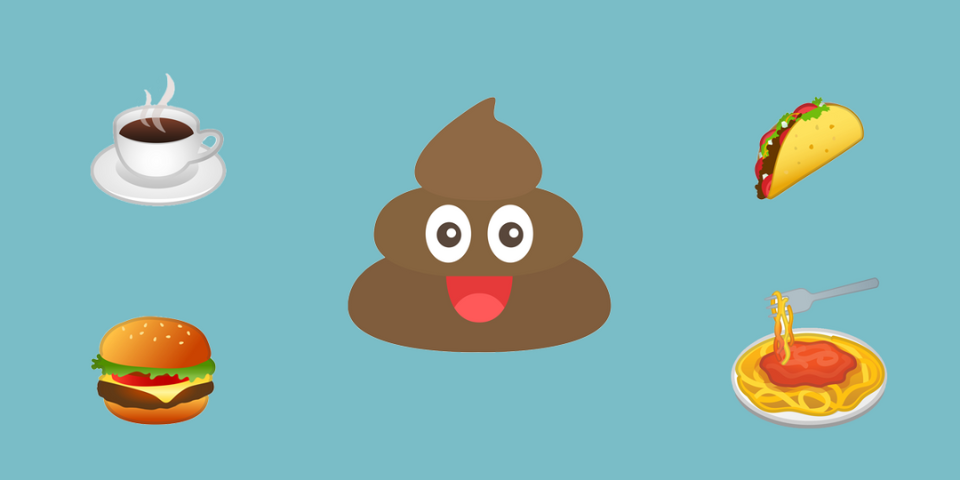Understanding your digestive health is key to maintaining overall wellness. Your poop can actually provide valuable insights into your diet and health. From color to consistency, your stool can act as a reflection of your nutrition.
"Eating the right foods for your body leads to healthier bowel movements," explains Todd Sinett, D.C., founder of Tru Whole Care in New York City and author of The Good Sh*t.
Experts share how the color, frequency, and consistency of your poop can indicate the quality of your diet. It's important to note that certain health conditions can also impact your stool, so consulting a physician if you have concerns is advised.
Poop Color
The color of your poop can reveal a lot about your dietary choices. Different food items can influence the color of your stool. Here's what various poop colors may indicate:

Brown Poop
Typically, brown stool signifies a healthy digestive system and diet. The shade of brown can indicate how quickly food moves through your gastrointestinal tract.
If your poop is significantly darker or lighter than usual, it may be a sign of dietary issues that need attention.
Green Poop
Consuming green vegetables rich in chlorophyll can give your stool a green hue. However, rapid transit of food through the digestive system can also result in green poop.
Red Poop
Foods like beets can turn your stool red. If you haven't consumed any red foods recently, it's advisable to consult a healthcare professional.
Black Poop
Iron supplements or medications like Pepto-Bismol can darken your stool. Persistent black stool may indicate an underlying issue.
Orange Poop
Beta carotene from foods like carrots can give your poop an orange tint. However, excessive consumption of carrot juice is usually required for this effect.
Yellow Poop
Pale yellow stool may indicate rapid bowel movements, which can be a result of a high-fiber diet.
Poop Frequency and Consistency
The frequency and consistency of your bowel movements are crucial indicators of digestive health. Changes in these aspects can signal underlying issues:

The Bristol scale categorizes stool into seven types based on consistency.
- Type 1: Separate, hard lumps
- Type 2: Sausage-shaped, lumpy
- Type 3: Sausage-shaped, cracked on surface
- Type 4: Sausage- or snake-shaped, smooth and soft
- Type 5: Soft blobs, clear-cut edges
- Type 6: Mushy pieces, ragged edges
- Type 7: Entirely liquid, no solid pieces
Types 1 and 2: Constipation
Hard and dry stool may indicate a lack of soluble fiber in your diet. Increasing fruit intake and staying hydrated can help alleviate constipation.
Types 3 and 4: Normal
Consistent stool in types 3 and 4 is considered normal. A balanced diet and fiber intake can contribute to healthy bowel movements.
Types 5 to 7: Diarrhea
Diarrhea can be triggered by various factors, including dietary habits and intolerances. Adequate fiber intake and identifying trigger foods can help manage diarrhea.
Tracking Your Poop
Keeping track of your diet and bowel movements can offer valuable insights into your digestive health. If you notice consistent patterns or changes in your stool, consult a healthcare professional for further guidance.
Remember to focus not only on what you see but also on how you feel after each bowel movement. Any persistent discomfort or unusual symptoms should be addressed promptly.
